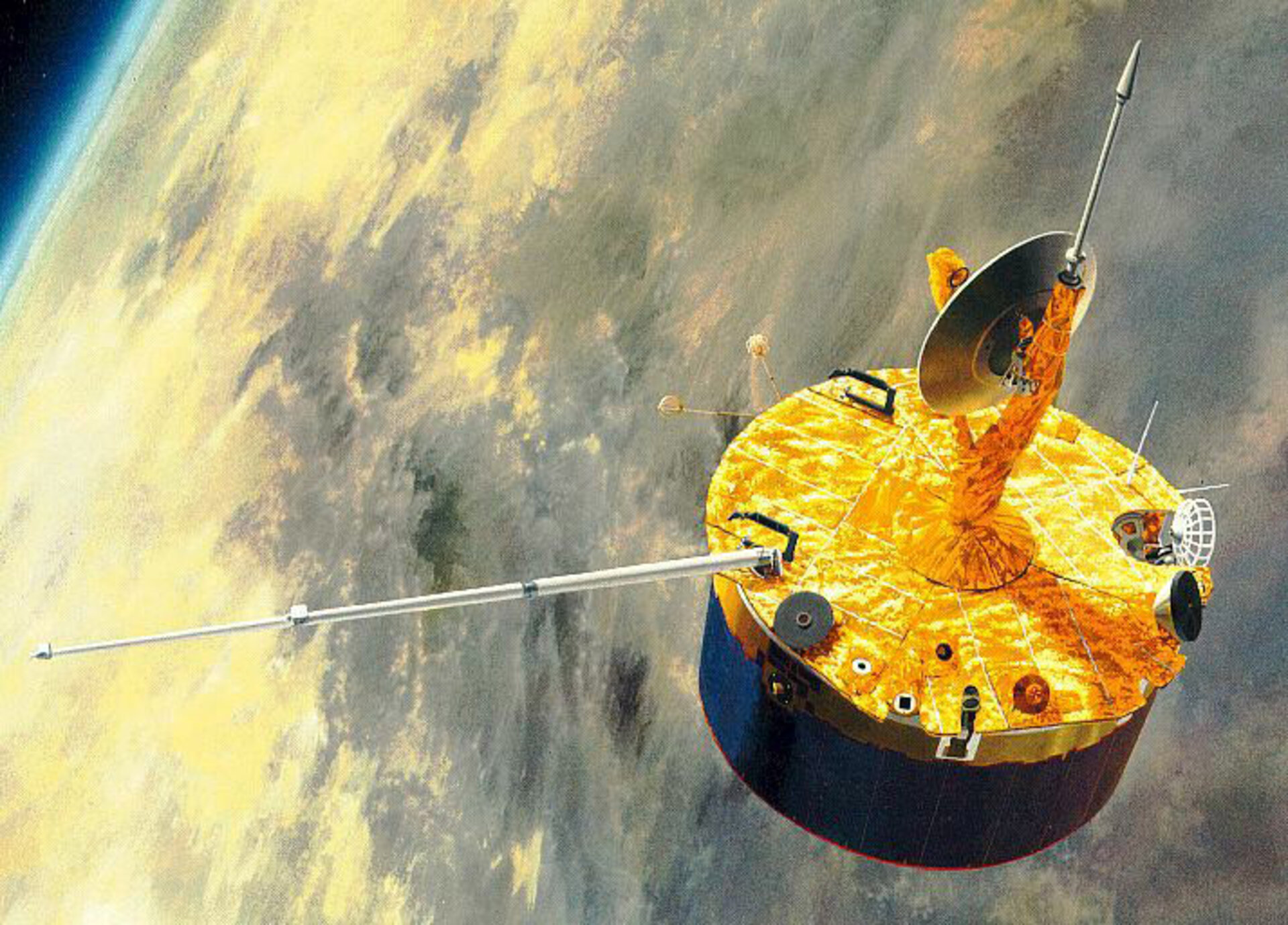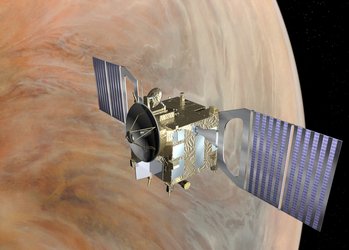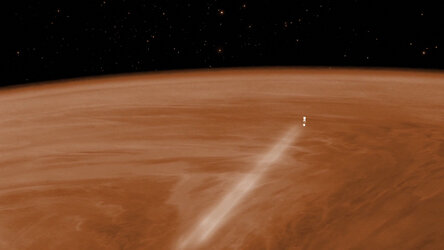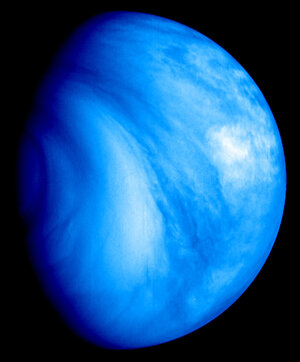Past missions to Venus
Despite the intensive past exploration of the planet, many of the planet’s peculiar features remained unexplained, opening up the door for a new phase in the exploration of Venus.
This important scientific call was picked up by Europe and an orbiter mission was developed by the European Space Agency and launched in November 2005.
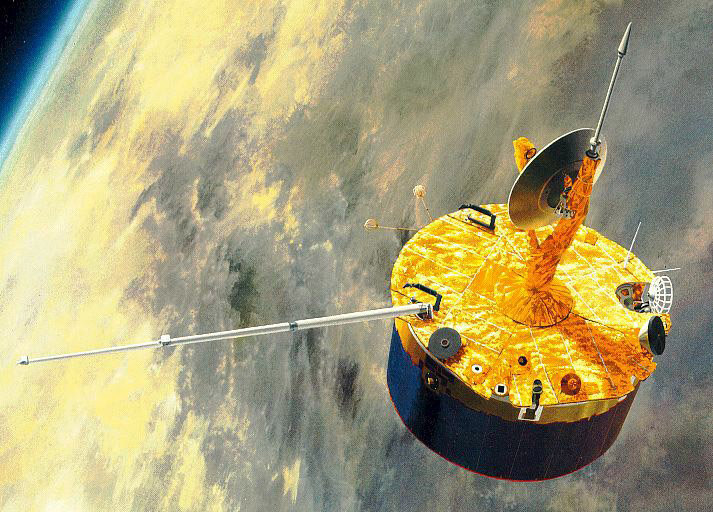
NASA's Pioneer Venus mission (1978), the Soviet Union's Venera 15 and 16 missions (1983-1984), and NASA's Magellan radar mapping mission (1990-1994) provided together a comprehensive picture of a dry world, with landscapes shaped by volcanic and intense geological activity. There were vast plains marked by lava flows, bordered by highlands and mountains.
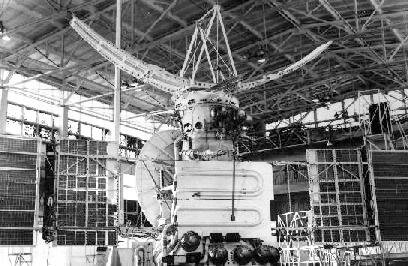
Later on, the discovery of the night-side thermal emissions from the deep inside the atmosphere of Venus provided an effective tool to peek through the dense clouds and study the lower atmospheric layers.
The Galileo and Cassini spacecraft were the first to use this phenomena during their short fly-bys en route to Jupiter and Saturn.
But the history of Venus exploration goes back even further...
| Mission (year) | Type | Highlights | |
|---|---|---|---|
|
Mariner 2 USA, 1962 |
Atmospheric probe | First spacecraft at Venus. Closest distance 35 000 km. No magnetic field detected. | |
|
Venera 4 USSR, 1967 |
Atmospheric probe | First probe to return data about atmospheric composition. | Crushed by pressure before reaching the surface. |
|
Venera 5 & 6 USSR, 1969 |
Atmospheric probes | Detected presence of atmospheric nitrogen and oxygen. | Crushed by pressure before reaching the surface. |
|
Venera 7 USSR, 1970 |
Lander | First successful soft landing of a spacecraft on another planet. | Measured surface temperature and pressure. |
|
Venera 8 USSR, 1972 |
Lander | First to measure windspeed as it descended through atmosphere. | Surface composition measured by gamma-ray spectrometer. |
|
Mariner 10 USA, 1974 |
Fly-by | First spacecraft to have an imaging system, flew by on way to Mercury in 1974. | Recorded atmospheric circulation and cloud-top temperatures. |
|
Venera 9 & 10 USSR, 1975 |
2 orbiter/landers | First spacecraft in orbit around Venus. | Landers returned the first black and white panoramic images of surface. |
|
Pioneer Venus 1 & 2 USA, 1978-1992 |
1 orbiter 4 atmospheric probes |
Longest mission in orbit around Venus (14 years). First orbiter to make radar map of surface. | Measured structure, composition and cloud properties down to 12 km altitude. |
|
Venera 11 & 12 USSR, 1978 |
Fly-by, 2 landers | Landers investigated structure and composition of atmosphere and clouds, measured solar radiation. | Atmospheric dynamics were studied by Doppler tracking. |
|
Venera 13 & 14 USSR, 1982 |
Fly-by, 2 landers | Landers returned the first colour panoramic views of the surface. | Conducted soil analysis, found leucite basalt (rare on Earth) and tholeiitic basalt . |
|
Venera 15 & 16 USSR, 1983 |
2 orbiters | Radar mapping of the surface. | Detailed study of mesosphere and cloud tops by high-resolution thermal emission spectroscopy. |
|
Vega 1 & 2 USSR, 1985 |
Fly-bys, 1 lander and 1 balloon each | En route to Comet Halley, dropped first balloons into atmosphere of another planet, to record winds. | Landers provided precise temperature profiles down to surface. |
|
Magellan USA, 1990-1994 |
Orbiter | First almost-global radar mapping of the surface. | |
|
Galileo USA, 1990 |
Fly-by en route to Jupiter | Spectral imaging of night-side near-infrared emissions. | Detection of radio waves possibly emitted by lightning. |
|
Cassini-Huygens USA/ESA/I, 1998/99 |
Fly-by en route to Saturn | Spectral imaging of night-side near-infrared emissions. |
NASA's MESSENGER mission to Mercury also made use of Venus for flybys in 2006 and 2007; the ESA-JAXA BepiColombo mission to Mercury also flew by Venus in 2020 and 2021, and conducted scientific observations. Venus gravity assists flybys are also used by NASA's Solar Parker Probe and have been used by ESA's Solar Orbiter mission, which made numerous gravity assist flybys at the planet to bring it closer to the Sun, and tilt its orbit in order to observe our star from different perspectives.
Following Venus Express' successful orbiting mission between 2006 and 2014, the only other Venus orbiter has been JAXA's Akatsuki mission; after a failed orbital insertion manouevre in 2010 it made a successful second attempt in 2015.
Future plans
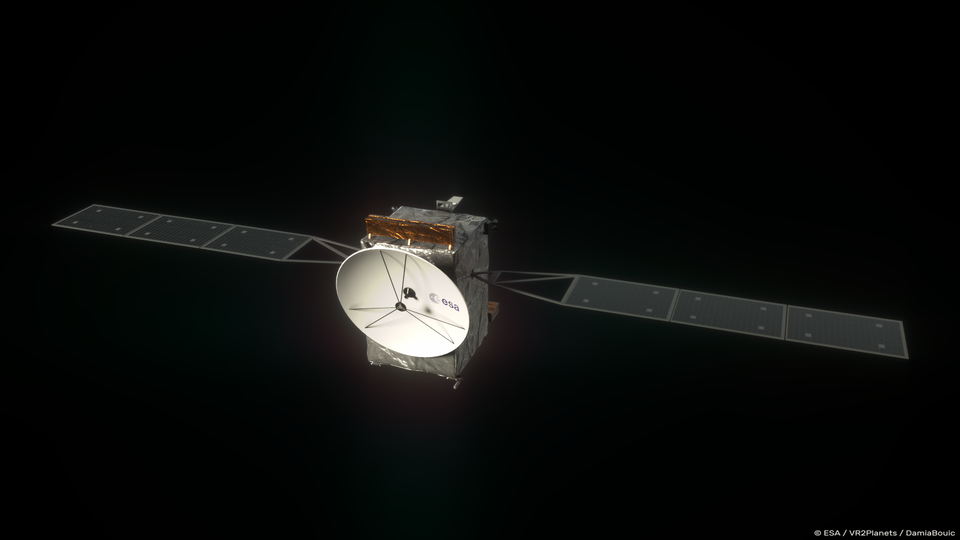
ESA's next Venus orbiter will be the revolutionary EnVision mission, which will provide a holistic view of the planet from its inner core to upper atmosphere to determine how and why Venus and Earth evolved so differently. The mission was selected by ESA’s Science Programme Committee on 10 June 2021 as the fifth Medium-class mission in the Agency’s Cosmic Vision plan, targeting a launch in the early 2030s.
NASA has also selected two new missions to Venus as part of its Discovery Program, with each expected to launch in the 2028-2030 timeframe: DAVINCI+ (Deep Atmosphere Venus Investigation of Noble gases, Chemistry, and Imaging) and VERITAS (Venus Emissivity, Radio Science, InSAR, Topography, and Spectroscopy). Together, EnVision, DAVINCI+ and VERITAS will provide the most comprehensive study of Venus ever.


